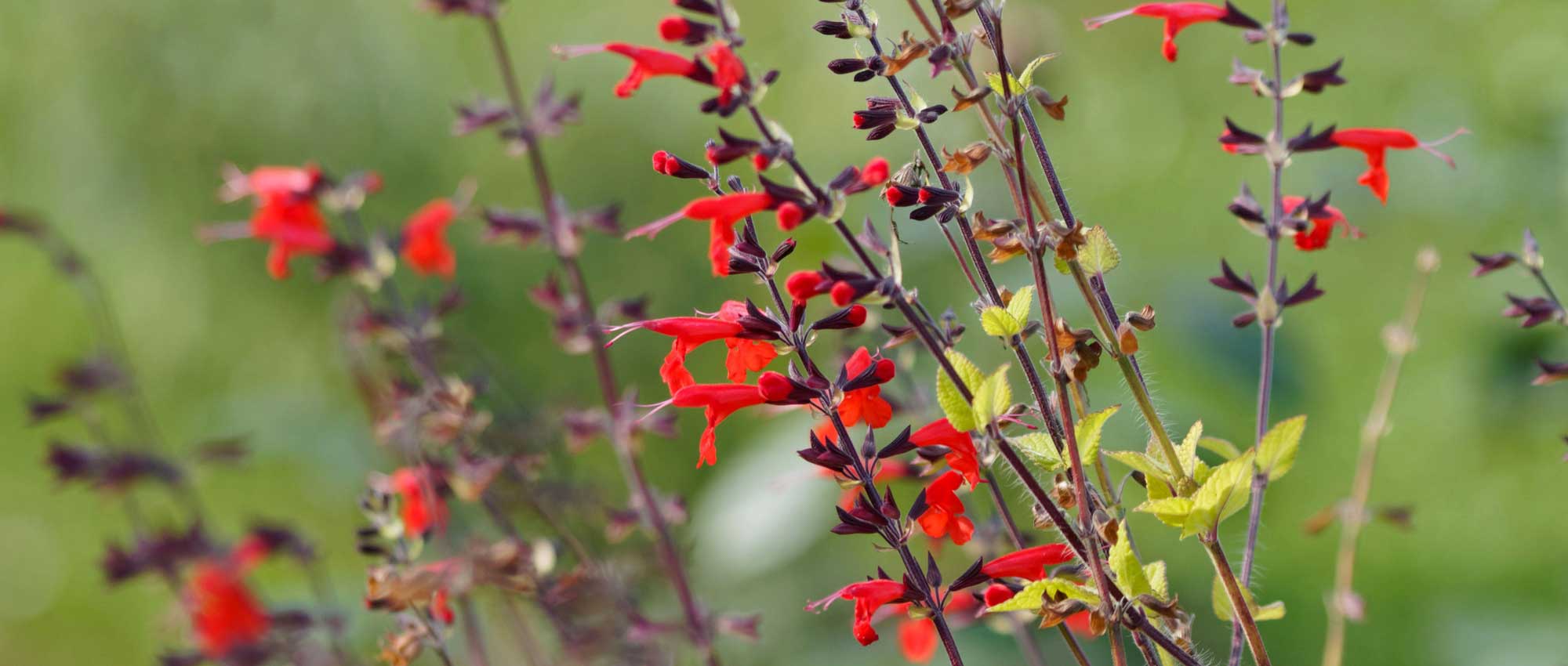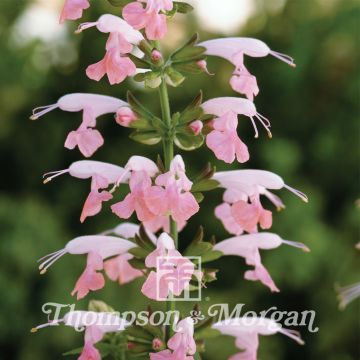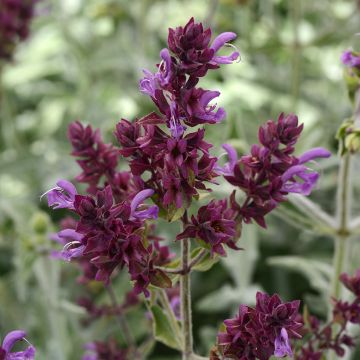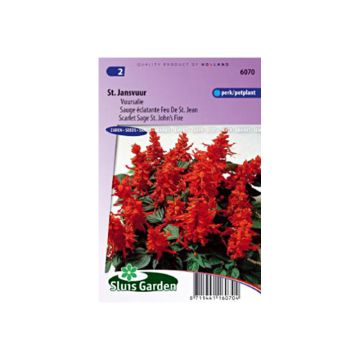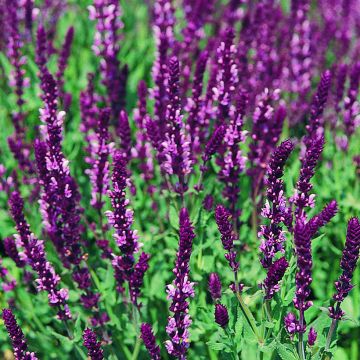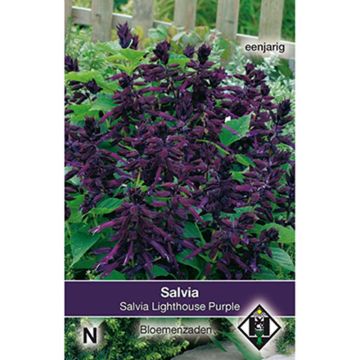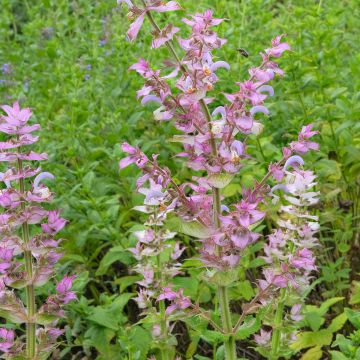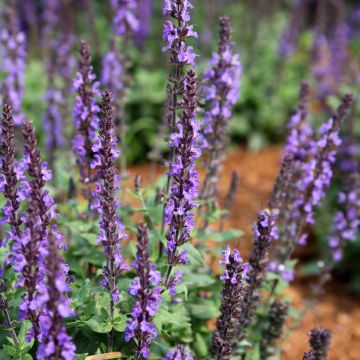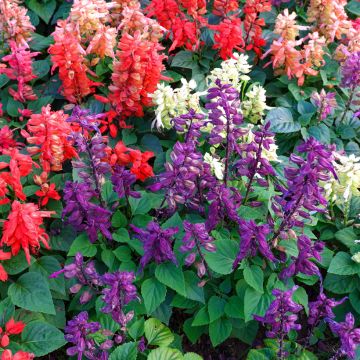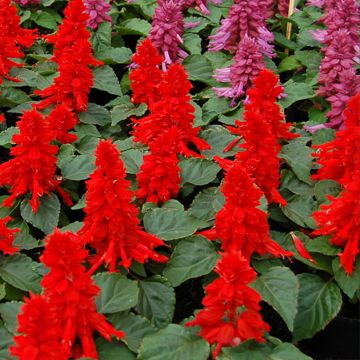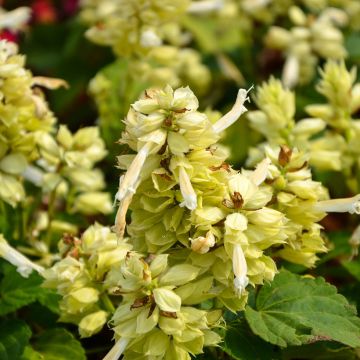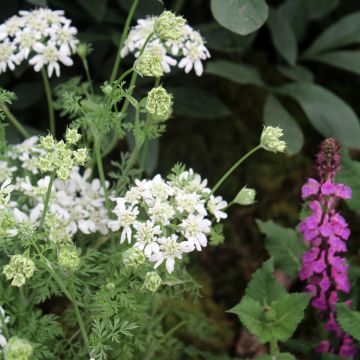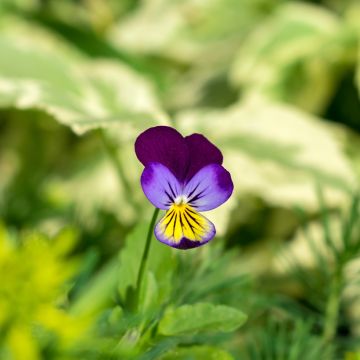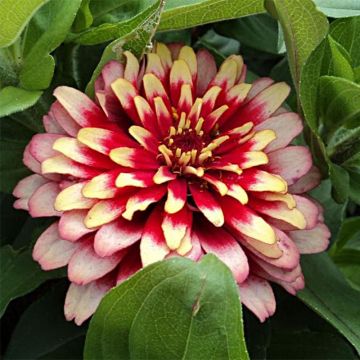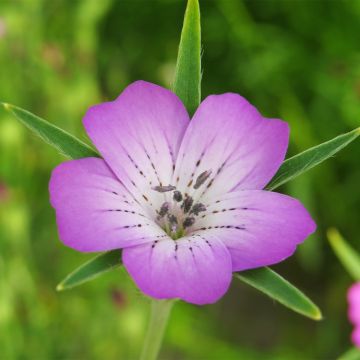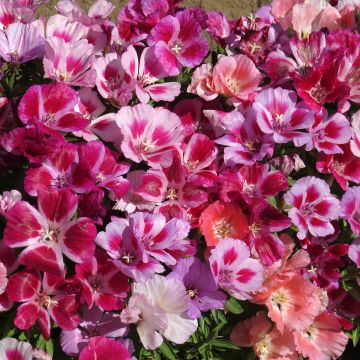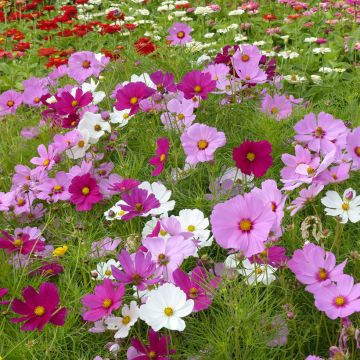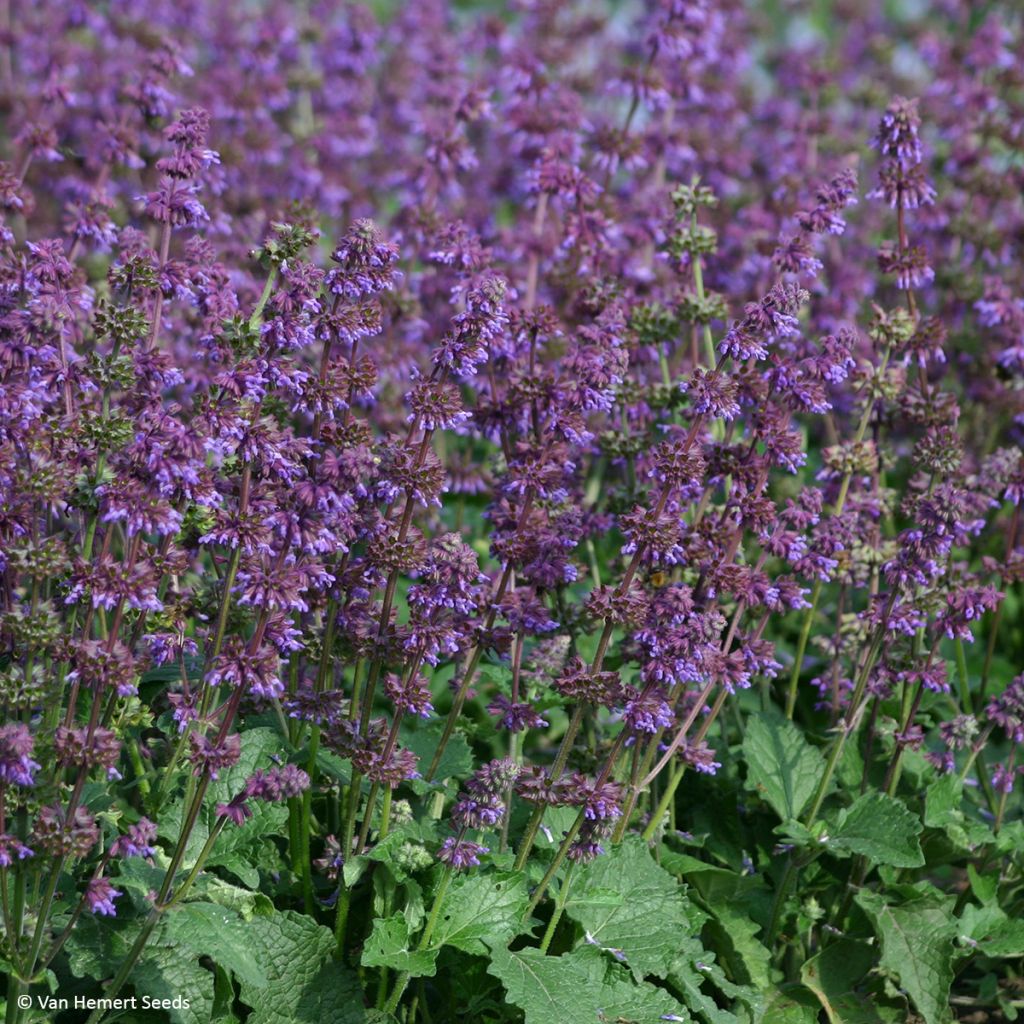

Salvia verticillata Purple Fairy Tale - seeds
Salvia verticillata Purple Fairy Tale - seeds
Salvia verticillata Purple Fairy Tale
Whorled Sage, Lilac Sage
Special offer!
Receive a €20 voucher for any order over €90 (excluding delivery costs, credit notes, and plastic-free options)!
1- Add your favorite plants to your cart.
2- Once you have reached €90, confirm your order (you can even choose the delivery date!).
3- As soon as your order is shipped, you will receive an email containing your voucher code, valid for 3 months (90 days).
Your voucher is unique and can only be used once, for any order with a minimum value of €20, excluding delivery costs.
Can be combined with other current offers, non-divisible and non-refundable.
Home or relay delivery (depending on size and destination)
Schedule delivery date,
and select date in basket
This plant carries a 6 months recovery warranty
More information
We guarantee the quality of our plants for a full growing cycle, and will replace at our expense any plant that fails to recover under normal climatic and planting conditions.
Does this plant fit my garden?
Set up your Plantfit profile →
Description
The 'Purple Fairy Tale' Whorled Sage (Salvia verticillata) is an excellent, floriferous and colourful selection of whorled sage. The plant produces numerous stems throughout the summer, generously adorned with tiny purple flowers nestled within purple bracts and arranged in compact clusters. This hardy perennial is easy to grow in the sun in well-drained soil. It quickly forms a beautiful cover for slightly wild areas of the garden from the first year and is a good source of nectar for bees.
Whorled Sage (Salvia verticillata) is a perennial herbaceous plant with a horizontal rhizome native to southern and central Europe, and western Asia. It grows spontaneously along paths and on barren slopes, mostly on limestone soil. This plant, like all sages, belongs to the lamiaceae or labiates family. The fast-growing cultivar 'Purple Fairy Tale' forms a compact basal clump, at least 20 cm (8in) high and 50 cm (20in) wide, composed of triangular and deeply veined, hairy, dark green leaves, with crenate toothed edges. When crushed, they emit an odour that may be unpleasant. The nectar-rich Flowering occurs from June to September as long as faded flowers are regularly removed. The purplish violet flower stems are 50-60 cm tall and branched. These are square-section stems, bearing small leaves and flowers grouped in whorls. The whorls form purplish violet clusters towards the upper part of the stems. Its hardiness is excellent in healthy and well-drained soil. The plant slowly spreads through its rhizome, and easily self-seeds in light soil, without retaining the characteristics of the parent plant.
'Purple Fairy Tale' Whorled Sage is vigorous enough to outcompete weeds. This perennial excels in natural beds, on slopes where it helps maintain stability with its deep anchoring roots, allowing it to draw in moisture even during heatwaves. In flower beds, you can grow it with bush roses along with clary sage and common sage. It also pairs perfectly with catmints, agastaches, and rose campions.
With over 900 species of annuals, perennials, and softwood shrubs distributed all over the globe, except for very cold regions and tropical forests, the genus Salvia is the most diverse in the lamiaceae family.
Flowering
Foliage
Plant habit
Botanical data
Salvia
verticillata
Purple Fairy Tale
Lamiaceae
Whorled Sage, Lilac Sage
Cultivar or hybrid
Other Salvia seeds
View all →Planting and care
Sow from February to May.
If you cannot provide a temperature of at least 15°C (59°F) for your sowing, wait until March as germination can be slow if the temperature is not high enough. A range of 18 to 24°C (64.4 to 75.2°F) seems to be ideal. Sow indoors 8 to 10 weeks before the last frost. Do not cover the seeds, as light is necessary for germination.
Transplant the seedlings if necessary. For best results, choose a larger pot, increasing the size according to the plant's growth. Move the young plants outside in late May or early June. Gradually acclimatise them to outdoor conditions for 10 to 15 days before transplanting them to their final location, 15 to 30 cm (6 to 12in) apart. Pinch the tip of the main shoot when the plants reach 15 cm (6in) high to promote bushy growth.
Cultivation:
Cultivate Salvia verticillata in ordinary, even poor and rather chalky soil, but always all well-draining. This plant tolerates some drought once well established. It does not like very clayey, sticky and waterlogged soils in winter that can harm its hardiness. Plant it in a sunny location or, at most, in partial shade in a warm climate. It is an easy, very floriferous plant. In spring, give it fertiliser and in April, shorten all the branches by half. After flowering, cut back the faded flower stems to stimulate and prolong flowering. To preserve the vitality of the sage, divide the plant after 3 or 4 years. Plant it in well-worked and lightened soil: to improve slightly poor soil, mix in some horticultural compost.
Sowing period
Intended location
Planting & care advice
This item has not been reviewed yet - be the first to leave a review about it.
Similar products
Haven't found what you were looking for?
Hardiness is the lowest winter temperature a plant can endure without suffering serious damage or even dying. However, hardiness is affected by location (a sheltered area, such as a patio), protection (winter cover) and soil type (hardiness is improved by well-drained soil).

Photo Sharing Terms & Conditions
In order to encourage gardeners to interact and share their experiences, Promesse de fleurs offers various media enabling content to be uploaded onto its Site - in particular via the ‘Photo sharing’ module.
The User agrees to refrain from:
- Posting any content that is illegal, prejudicial, insulting, racist, inciteful to hatred, revisionist, contrary to public decency, that infringes on privacy or on the privacy rights of third parties, in particular the publicity rights of persons and goods, intellectual property rights, or the right to privacy.
- Submitting content on behalf of a third party;
- Impersonate the identity of a third party and/or publish any personal information about a third party;
In general, the User undertakes to refrain from any unethical behaviour.
All Content (in particular text, comments, files, images, photos, videos, creative works, etc.), which may be subject to property or intellectual property rights, image or other private rights, shall remain the property of the User, subject to the limited rights granted by the terms of the licence granted by Promesse de fleurs as stated below. Users are at liberty to publish or not to publish such Content on the Site, notably via the ‘Photo Sharing’ facility, and accept that this Content shall be made public and freely accessible, notably on the Internet.
Users further acknowledge, undertake to have ,and guarantee that they hold all necessary rights and permissions to publish such material on the Site, in particular with regard to the legislation in force pertaining to any privacy, property, intellectual property, image, or contractual rights, or rights of any other nature. By publishing such Content on the Site, Users acknowledge accepting full liability as publishers of the Content within the meaning of the law, and grant Promesse de fleurs, free of charge, an inclusive, worldwide licence for the said Content for the entire duration of its publication, including all reproduction, representation, up/downloading, displaying, performing, transmission, and storage rights.
Users also grant permission for their name to be linked to the Content and accept that this link may not always be made available.
By engaging in posting material, Users consent to their Content becoming automatically accessible on the Internet, in particular on other sites and/or blogs and/or web pages of the Promesse de fleurs site, including in particular social pages and the Promesse de fleurs catalogue.
Users may secure the removal of entrusted content free of charge by issuing a simple request via our contact form.
The flowering period indicated on our website applies to countries and regions located in USDA zone 8 (France, the United Kingdom, Ireland, the Netherlands, etc.)
It will vary according to where you live:
- In zones 9 to 10 (Italy, Spain, Greece, etc.), flowering will occur about 2 to 4 weeks earlier.
- In zones 6 to 7 (Germany, Poland, Slovenia, and lower mountainous regions), flowering will be delayed by 2 to 3 weeks.
- In zone 5 (Central Europe, Scandinavia), blooming will be delayed by 3 to 5 weeks.
In temperate climates, pruning of spring-flowering shrubs (forsythia, spireas, etc.) should be done just after flowering.
Pruning of summer-flowering shrubs (Indian Lilac, Perovskia, etc.) can be done in winter or spring.
In cold regions as well as with frost-sensitive plants, avoid pruning too early when severe frosts may still occur.
The planting period indicated on our website applies to countries and regions located in USDA zone 8 (France, United Kingdom, Ireland, Netherlands).
It will vary according to where you live:
- In Mediterranean zones (Marseille, Madrid, Milan, etc.), autumn and winter are the best planting periods.
- In continental zones (Strasbourg, Munich, Vienna, etc.), delay planting by 2 to 3 weeks in spring and bring it forward by 2 to 4 weeks in autumn.
- In mountainous regions (the Alps, Pyrenees, Carpathians, etc.), it is best to plant in late spring (May-June) or late summer (August-September).
The harvesting period indicated on our website applies to countries and regions in USDA zone 8 (France, England, Ireland, the Netherlands).
In colder areas (Scandinavia, Poland, Austria...) fruit and vegetable harvests are likely to be delayed by 3-4 weeks.
In warmer areas (Italy, Spain, Greece, etc.), harvesting will probably take place earlier, depending on weather conditions.
The sowing periods indicated on our website apply to countries and regions within USDA Zone 8 (France, UK, Ireland, Netherlands).
In colder areas (Scandinavia, Poland, Austria...), delay any outdoor sowing by 3-4 weeks, or sow under glass.
In warmer climes (Italy, Spain, Greece, etc.), bring outdoor sowing forward by a few weeks.






























